Mesopotamia Unit Lessons
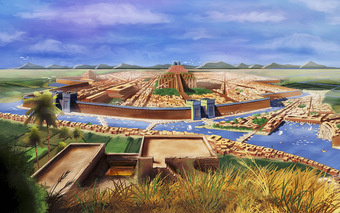
1 GEOGRAPHY: Geography is the study of how humans interact with their environment. At the end of the last ice age, people began to give up their nomadic lifestyles and settle down. The people who established permanent settlements in Mesopotamia did so because of the resources the environment provided them. Marshland around the Tigris and Euphrates Rivers provided these early settlers with ample wild game and birds to eat. The rivers provided fresh water for drinking and cooking, and mud from the Rivers' banks provided clay for mud bricks and pottery. The early settlers also learned that if they dug canals from the Rivers they could irrigate their crops and develop a food surplus. Geography was a key factor in determining the success of the world's first civilization, Mesopotamia.
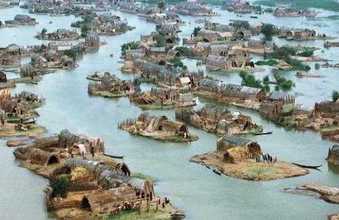
2 PIONEERS: 10,000 years ago, in a region dominated by harsh deserts, the first pioneers in Mesopotamia found the land between the Tigris and Euphrates Rivers ideal for settling down. Leaving their nomadic lifestyles behind, they soon discovered that the “Land Between the Rivers” was suitable for farming and that, by building irrigation canals that ran from the rivers to their crops, they could create surpluses of items necessary for their survival. It wasn’t long before they had domesticated animals as well. In this lesson you will take a look at the ambitious, creative early pioneers who settled in the land between the rivers, ancient Mesopotamia.
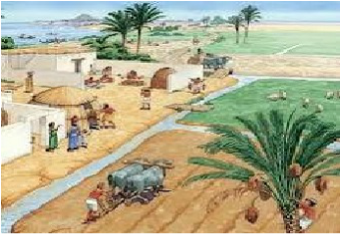
3 CIVILIZATION: In the “Land between the Rivers,” the rise of agriculture and the domestication of animals allowed the early pioneers to give up their nomadic, hunter-gatherer lifestyles and settle into villages. As these farming communities developed food surpluses, some people took on other responsibilities in the community and the communities grew from villages into cities. The rise of cities is linked to the very idea of civilization. Civilization is an advanced form of culture marked by the presence of five traits: specialized workers, complex institutions, record keeping, advanced technology, and cities. As you read this lesson, think what it must have been like to create and live in the world’s very first cities.
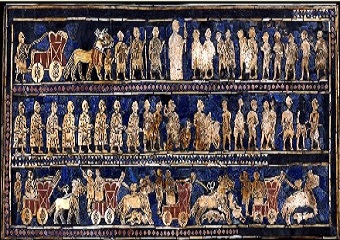
4 CITY-STATES: Sumer grew rapidly. Soon, there were hundreds of villages and towns, some with populations of only a few hundred, and some with populations of 30,000 or more. Cities offered people more opportunities than life in the country and became centers of trade, learning, and religion. By the year 2500 BCE, the total population in ancient Sumer was more than half a million people. About four out of five of those people lived in the cities, making Sumer the world’s first urban culture. To protect themselves, small towns attached themselves to big cities. This created a system of city-states. City-states are communities that include a city and its surrounding farmland. For this lesson, imagine yourself living in the world's first cities. With their hustle and bustle, their opportunities for employment, their ability to use government to organize and meet public needs, their thriving arts, and surrounded by new technologies and inventions, you are making history.
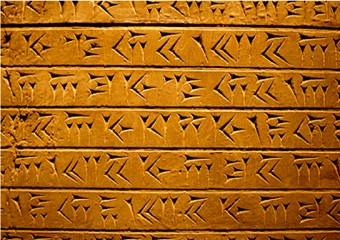
5 CUNEIFORM: Sometimes it really does pay to be first. In addition to creating the first civilization, the Mesopotamians invented all sorts of other things that are still in use today. Other inventions credited to the ancient Mesopotamians include the wheel, the sailboat, frying pans, razors, cosmetic sets, shepherds pipes, harps, kilns to cook bricks and pottery, bronze hand tools like hammers and axes, the plow, the plow seeder, a working pump and, believe it or not, the first battery. Many of these inventions directly influenced the growth of cities and, therefore, the growth of civilization. Even with all of those great inventions to their credit, however, the invention most important to future generations was the Mesopotamian creation of a written language. Today, we call that written language cuneiform. In this lesson you’ll explore the power of the written word. In preparation for this lesson's activity, think what your world might be like without writing.
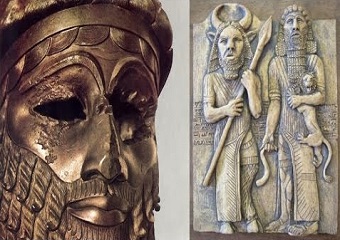
6 GILGAMESH: As you know, the Mesopotamians invented lots and lots of things. Writing, of course, was one of the very most important of all those things. Using their writing system, cuneiform, the ancient Mesopotamians kept records of things small and large. Famously, they kept records of their trade, as well as lists of their kings. Indeed, the Mesopotamians loved keeping lists,so much so that they even had lists of their lists. The Assyrian king, Ashurbanipal kept a great library in his capital city of Nineveh. In it, archaeologists have found letters, legal texts, and a wealth of scientific information. One of the other things the Mesopotamians recorded in cuneiform were great stories of gods and kings. Some of these were also found in the great library at Nineveh.The greatest of these stories was the "Epic of Gilgamesh." Gilgamesh was a legendary king of Uruk. The "Epic of Gilgamesh" is the story of his quest for immortality. It is also the world's first superhero tale.
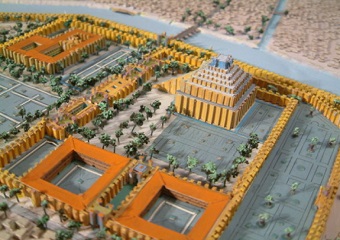
7 SUMER: Ancient Sumer was a bustling place. The cities were built along the Tigris and the Euphrates Rivers. Long docks were built along the sides of the rivers so that ships could easily dock and unload the goods they had to trade. Ships brought food, drinks, clothes, jewelry, wine, and other goods to cities up and down the rivers. Banquets with music and dancing were frequent. At such Celebrations, poets recited verses about great kingly deeds and golden cups filled with sweet delicious date wine were lifted to toast the banquet's hosts. Daily Life in Sumer was filled with art, prayerful worship, and obedience to the king. If you were in the upper classes your life would be especially rich. In the social order you would exist just below kings and priests and your life would center around the ziggurat. If you were a child in ancient Sumer, your life would also be full. Girls learned how to take care of the household and boys spent their days at school. The Sumerians, after all, created the first schools.
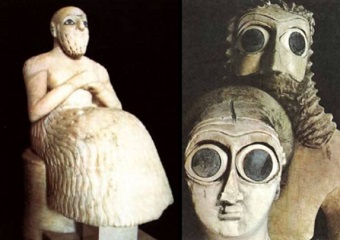
8 RELIGION: The Mesopotamians were polytheistic. That means that they worshiped many, many gods. They had gods for everything. If you got sick, one of the gods was mad at you. If your door stuck and was hard to open, maybe you weren’t paying enough attention to the gods. If two fields were side by side and one was growing tall with thick crops and the other was full of weeds, then it was obvious that the gods favored one farmer and disliked the other. You couldn’t see the gods (at least normal people couldn’t), but the ancient Mesopotamian people believed that the gods ruled every aspect of their lives. As a result, priests had enormous power in Mesopotamia and much of a Mesopotamian's life was devoted to honoring their gods. For this lesson, you will learn about Mesopotamian religion, read a Mesopotamian creation story, and write a creation story of your own.
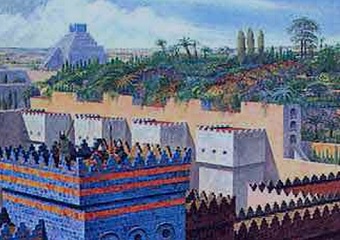
9 BABYLON: When Sumer began to decline around 1750 BCE, there was another rising power ready to step in and take its place. That place was Babylon. Arguably the most well known of all ancient Mesopotamian cities, Babylon owes much of its familiarity to its numerous mentions in the Bible. While Biblical references to Babylon are not flattering, in ancient times it was much envied for its fabulous wealth and its powerful government. Babylon was home to such famous sites as the Tower of Babel, the Hanging Gardens of Babylon, and the Processional Way that featured the Ishtar Gate, a magnificent entry that announced Babylon's power to all who entered through it. Perhaps more important to modern society, however, Babylon was also home to the first written code of law created under one of Babylon's most powerful kings, Hammurabi. To this day, you can see the influence of Hammurabi's code both in our laws and in the punishments given to criminals.
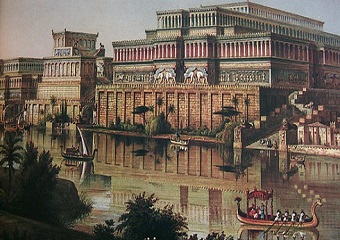
10 ASSYRIA: There were three major civilizations in ancient Mesopotamia. The first civilization was ancient Sumer. About a thousand years later, the Babylonians and the Assyrians took over, but the Sumerian culture lived on. The Babylonians lived in lower Mesopotamia. The Assyrians lived at the same time as the Babylonians, but the Assyrians lived in northern Mesopotamia, at the foot of the Taurus mountains. Of the three great Mesopotamian civilizations, Assyria was the most powerful and controlled the most land.Through military domination, the Assyrians conquered many lands and built a huge empire that included Babylon, Syria, Palestine, and even Egypt. While we know the Assyrians for their military might, during their reign of power they were also known as great traders, craftsmen, and artists. They also valued knowledge. It is because of the library at Nineveh that we know so much about life in ancient Mesopotamia.


